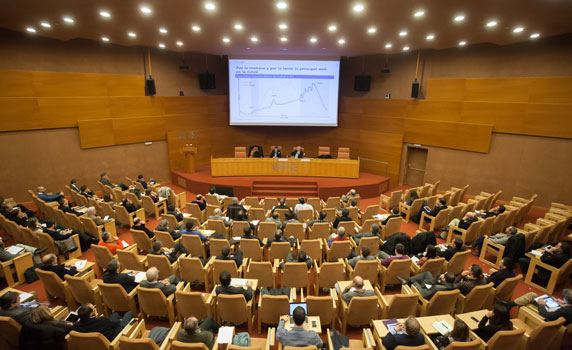
Against the backdrop of the World Mobile Congress, held in Barcelona February 25-28, hundreds of executives from the mobile sector attended the IESE Continuous Education session, "The Mobile Environment in Western Europe: A General Vision on Local Trends and Global Strategies."
User trends and patterns
Within the framework of the General Management-Digital Marketing Series, held on IESE's campus, the session featured speaker José Luis Pulpón (PDD ’06), Industry Leader Telecom & Tech & Local, Google Spain.
Following an introduction by IESE Prof. Carlos García Pont, Pulpón described key trends and the current context of the mobile market in Spain. Mobile is taking major strides and by 2014 it is predicted that there will be more mobile internet users than PC users, he said. By 2016, traffic through these devices will have multiplied 17 times. Internet searches via mobile already make up 22 percent of the global total.
Pulpón discussed the current navigation patterns of users, which revealed some relevant statistics: 65 percent of purchases start with a smartphone, as opposed to 25 percent which start with a PC and 11 percent with a tablet. The use of mobile phones and tablets will rise notably as compared with television viewers, and will continue to expand steadily in terms of purchasing, he said. Yet mobile advertising is not keeping pace with the growing number of users, he noted.
Adaptive strategies
When setting out a mobile strategy, what is most important is to ask what asset the company seeks to develop: sometimes the goal is not financial, but related to client experience.
Pulpón discussed five types of assets: increasing store traffic, using a call center as a means of closing a sale if it cannot be done via mobile phone, attracting clients by mobile to close a sale on a PC, sales applications and direct sales via a mobile website (hotel and restaurant reservations, for example).
In conclusion, he outlined several examples of companies that have been successful in reaching their advertising objectives, incuding Nike+ Running, Privalia, Coca-Cola, Banco Popular and Meliá.